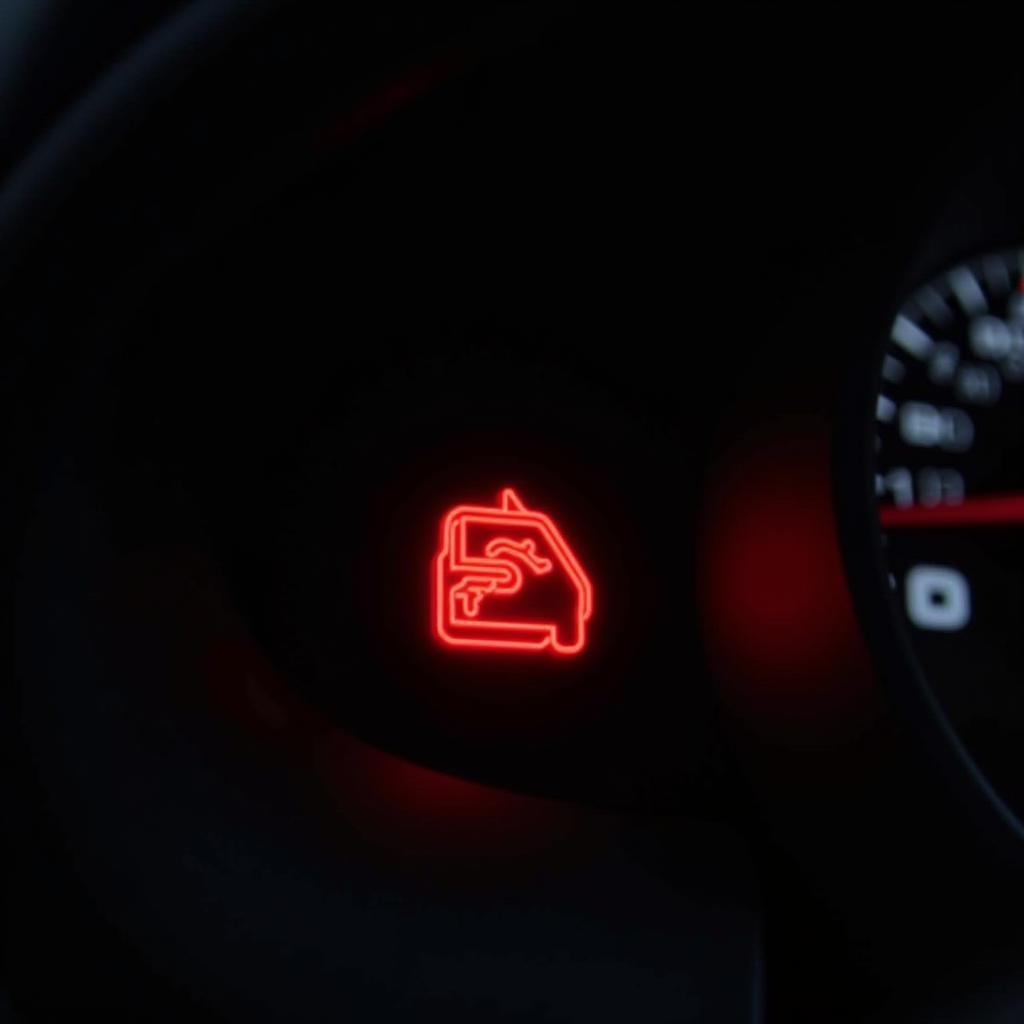If your brake warning light went off while driving on a spare tire, you’re likely experiencing a common issue. Many drivers encounter this and it can be alarming, but understanding the potential causes can help you address the problem quickly and safely. This article will explore why this happens, offer solutions, and guide you on the best course of action.
Why Does My Brake Warning Light Come On With a Spare Tire?
Several factors can trigger your brake warning light when driving with a spare, often related to differences between your spare and regular tires. These differences can affect your car’s braking system and trigger the warning light.
Different Tire Size and ABS
One of the most common reasons is the difference in tire size between your spare and your regular tires. Modern vehicles often have Anti-lock Braking Systems (ABS), which rely on wheel speed sensors to function correctly. A smaller spare tire rotates faster than a regular tire at the same speed, potentially confusing the ABS system and illuminating the warning light.
Low Tire Pressure in the Spare
Spare tires, especially “donut” spares, often require higher air pressure than regular tires. If your spare is underinflated, it can cause the ABS to malfunction, triggering the warning light. Always check the recommended pressure for your spare tire and inflate it accordingly before driving.
Faulty ABS Sensors
While less common, a faulty ABS wheel speed sensor could also be the culprit. The sensor might be malfunctioning independently of the spare tire, but the change in wheel speed caused by the spare could exacerbate the issue and make the problem more noticeable.
Damaged Wiring
Driving on rough terrain with a spare, particularly a smaller “donut” spare, can sometimes damage the wiring connected to the ABS sensors. This damage can disrupt the signal from the sensor to the ABS control module, triggering the warning light.
Troubleshooting the Brake Warning Light with a Spare Tire
Here’s a step-by-step guide to help you troubleshoot the brake warning light issue when driving on a spare:
- Check the spare tire pressure: Ensure the spare tire is inflated to the recommended pressure listed on the tire sidewall or in your vehicle’s owner’s manual.
- Inspect the ABS wiring: Visually check the wiring connected to the ABS sensors near the spare tire for any signs of damage, such as cuts, fraying, or loose connections.
- Drive cautiously: If the warning light persists after checking the tire pressure and wiring, drive cautiously to a safe location and avoid hard braking. A smaller spare tire can affect handling and braking performance.
- Consult a professional: If the problem continues, it’s best to consult a qualified automotive technician. They can diagnose the issue with specialized diagnostic equipment and perform necessary repairs, such as replacing a faulty ABS sensor or repairing damaged wiring.
What If My Brake Warning Light Stays On After Replacing the Spare?
If the warning light remains on even after replacing the spare with your regular tire, the issue might not be related to the spare itself. It could indicate a more serious problem with your braking system, such as low brake fluid, worn brake pads, or a malfunctioning ABS module. In this case, it’s crucial to have your vehicle inspected by a qualified mechanic immediately.
Expert Insights
“Many drivers panic when they see the brake warning light come on, especially with a spare tire. However, it’s often a simple fix like adjusting the tire pressure. Always check the recommended pressure for your spare,” says Michael Davis, ASE Certified Master Technician.
“Remember, spare tires are temporary. They’re not designed for extended driving or high speeds. Get your regular tire repaired or replaced as soon as possible,” adds Susan Miller, Automotive Engineer.
Conclusion
Seeing your brake warning light illuminate while driving on a spare tire can be concerning. However, understanding the common causes and following the troubleshooting steps outlined above can often help resolve the issue. If the problem persists, it’s essential to consult a qualified automotive technician for a thorough diagnosis and repair. Ignoring the warning light can lead to more significant problems down the road, so addressing it promptly is crucial for your safety and the longevity of your vehicle. Remember to check your spare tire pressure and drive carefully when using a spare.
FAQ
- Can I drive with the brake warning light on? While you can technically drive short distances, it’s not recommended. The light indicates a potential problem with your braking system, which could compromise your safety.
- Is it safe to drive on a spare tire for a long time? Spare tires, especially compact spares, are designed for temporary use only. They are not meant for extended driving or high speeds.
- How long can I drive on a donut spare? Typically, you shouldn’t drive on a donut spare for more than 50-70 miles, and never exceed the speed limit indicated on the tire.
- Why does my spare tire require higher pressure? Due to their smaller size, compact spares require higher pressure to support the vehicle’s weight adequately.
- What should I do if my brake warning light stays on after replacing the spare? If the light remains on, have your vehicle inspected by a mechanic as soon as possible. The problem may be unrelated to the spare tire and could indicate a more serious braking issue.
- How often should I check the pressure in my spare tire? Check your spare tire pressure at least every time you check your regular tires, typically monthly.
- Where can I find the recommended pressure for my spare tire? The recommended pressure is usually listed on the tire sidewall or in your vehicle’s owner’s manual.

